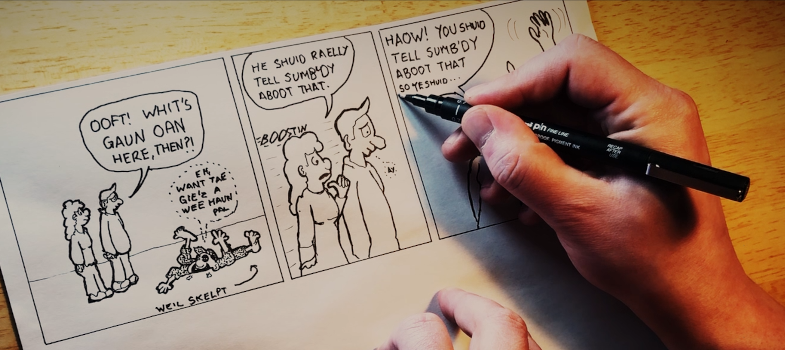Scots as a language learning option in schools

© Michael Dempster
1. Introduction
In this final unit written by Michael Dempster, you will explore Scots as a potential subject area in its own right within schools, where pupils can learn the language, or improve their already existing skills in Scots further. This unit also revolves around multilingual practices in the classroom and what that could mean with regard to Scots in your own teaching context to ensure you create a safe space for learners to use their own voice and language.
In addition, you will find out more about the complexities such an approach brings not only because of the different levels of confidence and proficiency of pupils and teachers, but also due to the negative image that still exists around Scots in educational contexts.
An important point for schools and teachers today is how to represent the sounds of Scots language on the page. This is writing in a non-standard language. Scots does not have a standard or one correct answer for how it should be written. We have seen not only writers across history take different approaches, but even those published as contemporaries take different approaches. This is often down to dialect. It is also down to personal choice and the desire to represent one’s own unique voice. We encourage a similar approach be taken in classrooms today. Many learners’ experience of Scots will be specific to their dialect area. This opens a wide variety of creative opportunities, particularly for creative writing, poetry and fiction.
How to assess or correct writing like this requires a tweaked approach from assessing or correcting writing in a standardised language like English. The reality and lived experiences of learners can be explored here – with the option for schools to link more closely with life outside of education for children and young people. It is their knowledge of language from outside the classroom which learners draw on, just as they do when using their imagination for writing a story or poem. If they have seen Scots written down, that experience helps them to write confidently. If the learners have never seen Scots written before (particularly in a classroom environment) they will require more support. Resources are available on the Scots Language Centre website as well as from Education Scotland, such as 100 key Scots words which is broken down into the different dialects of Scots, for you to use depending on where you and your class are in the country.
Key learning points
- to learn about language standardisation and the development of spelling conventions in Scots
- to understand the importance of dialect diversity for both written and spoken Scots
- to find out about the relationship between Scots and English in the context of creative writing
- to develop teaching ideas and assessment techniques for Scots spelling and pronunciation
- to learn about the role of Scots as one of many languages in a school context
- to understand the impact of multilingual classroom practices on pupils’ attainment and inclusion.
